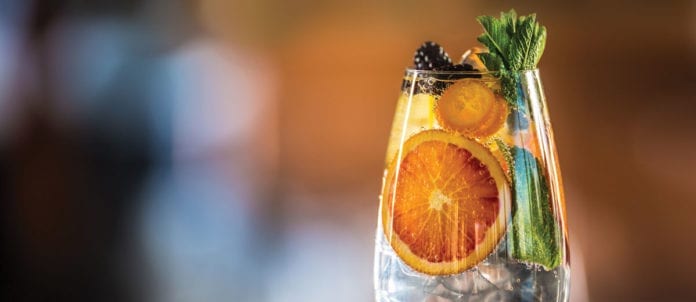Cocktail culture in Canada is on the rise, with Restaurants Canada reporting spirit servings at casual-dining restaurants increased from 16 per cent in 2013 to 20 per cent in 2018. Spirits are in higher demand at fine-dining restaurants as well, with additional research showing spirits now account for 23 per cent of alcohol servings.
“Cocktails, like the Old Fashioned, are commonplace and slide off the tongue for the average guest now,” says Amber Bruce, bar manager at the Keefer Bar in Vancouver. “A restaurant that used to only have a selection of imported beers and big-box wine brands now needs to make at least classic cocktails. It’s become an expectation.”
Health, sustainability and the locavore movement are driving forces in many areas of foodservice and the cocktail world is no exception. “There’s more focus on local products,” says Bruce. “A couple of years ago, we only had two or three different Canadian gins and vodkas, but now the craft-distillery movement is blowing up.”
In addition to using more Canadian-made craft spirits, mixologists are incorporating local produce. Andrew Keyes, head bartender at Halifax’s Lot Six Bar & Restaurant, says his team sources herbs such as mint and basil — and unconventional ingredients such as parsnips — from local farmer’s markets to use in cocktails.
Evelyn Chick, bar manager at Toronto’s PrettyUgly bar, says bartenders are increasingly approaching local ingredients with the mindset of a chef; thinking about the flavours of a cocktail the same way a chef might think about the flavours of a dish. “In Canada, we have an abundance of things like cedar, balsam fir and mushrooms,” says Chick. “And we can get [items] like rockweed or sea asparagus from the east coast — that’s a great thing that sets Canadian cocktails apart.”
Bartenders are also becoming more mindful about waste and the sustainability of their ingredients. “It’s being creative with the use of everything,” says Chick. “It’s thinking about your ingredients and allowing for a second or third use instead of just tossing it away.”
For example, leftover limes and lemons are used to make new ingredients, such as liqueurs and citrus stocks for other drinks. “I always like to talk about the life of a pineapple,” says Chick. “If we juice the pineapple for service, we’ll use that pineapple juice to make a syrup and we ferment the pineapple husk to make tepache (a fermented beverage made from the peel and rind of pineapples).”
The wider availability of non-alcoholic distillates such as Seedlip, a popular alcohol-free spirit developed in the U.K., is driving a continued trend towards low ABV cocktails and mocktails. “It allows people to go out and have a few drinks and not be intoxicated,” says Chick. “You can also experience more flavours that way.”
Bruce adds the trend towards high-end mocktails is moreinclusive for customers who want to have a drink with their friends but prefer not to consume alcohol. “It makes them feel more at home because they can blend into the social fabric and not be called out by their friends,” says Bruce.
Written by Jessica Huras


















